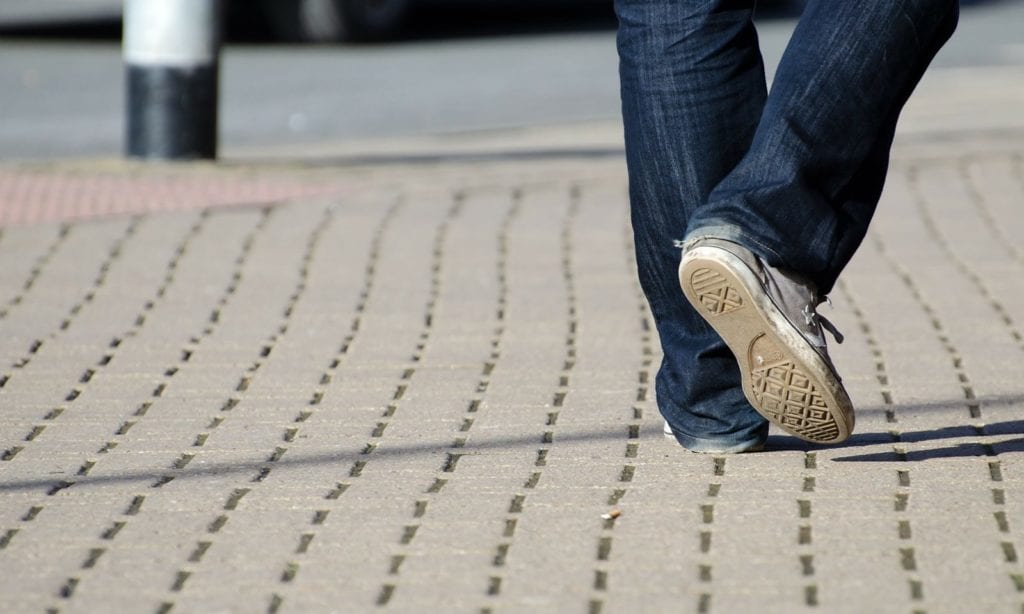What Causes the leg to Break out After Walking on Concrete?

Introduction
When you spend most of your working day walking or standing on hard concrete flooring, you will find that your legs may swell, you can develop varicose veins and also back pain. These effects can be mitigated by wearing comfortable, shock absorbing, supportive shoes.
What can help when Walking on Concrete?
Wearing the right footwear when you are spending your day walking on concrete floors you not only need a shoe that offers support, comfort, durability, and stability, you also need to ensure that the shoe you choose is exactly the right fit for you. If your shoes are either too big or small, you can find that the pain from standing on concrete for long periods is increased instead of reduced by your shoes.
Often chronic back pain is also caused by wearing the incorrect footwear when walking on concrete. Find the ideal pair of shoes to help ease back pain here. When looking at the shoe you require for this type of surface is one that will support your arches and relieve pressure placed on your ankles. High heels are not a good option here. Another thing to remember is that running shoes are not a good option here either.
The reason for this is that running and walking are two different types of motion and a great running shoe is not necessarily the best for walking, especially on hard surfaces like concrete. Shock absorbing qualities in a shoe will go a long way in providing the comfort levels you need to be able to avoid foot injury when walking on concrete.
The shock absorbing qualities of a good walking shoe should be spread throughout the sole of the shoe, as when walking, unlike running, the shock is spread evenly over your foot when walking. The midsole of a great walking shoe will be cushioned and the sole of the shoe should be slightly rounded with a rigid front end.
Can Walking on Concrete Raise your Blood Pressure?
 Walking on concrete floors can have a whole host of negative health effects when you do it for long periods of time. Concrete by its nature is a very inflexible and hard surface that does not provide any shock absorbency. Health problems experienced when walking on concrete for long periods of time include foot discomfort, lower leg and back pain, hip degeneration and skin irritation, however, it will not necessarily raise your blood pressure.
Walking on concrete floors can have a whole host of negative health effects when you do it for long periods of time. Concrete by its nature is a very inflexible and hard surface that does not provide any shock absorbency. Health problems experienced when walking on concrete for long periods of time include foot discomfort, lower leg and back pain, hip degeneration and skin irritation, however, it will not necessarily raise your blood pressure.
In fact, walking as a form of exercise will naturally lower your blood pressure as will any kind of aerobic exercises. However raising your stress levels, from sore and swollen feet may have an impact on your blood pressure as well so picking the correct shoes is of vital importance if you are going to be spending long periods of time walking on concrete floors.
The shoe you choose should ideally be lightweight, supportive both of your feet and ankles as well as having great shock absorbency is ideal. Protective shoes that are durable in the way they are constructed are the ones to look out for in order to reduce your stress load and keep your blood pressure down.
Can Sciatica leg pain be Caused by Standing or Walking on Concrete Without Proper Footwear?
Sciatica pain develops in the lower back and then radiates down from your buttocks down the back of your leg. This pain is caused when pressure is applied to the sciatic nerve and can be caused by a herniated disc, bone spurs or some form of muscle strain. Walking on the hard concrete floor when you wear the incorrect shoes can definitely aggravate your sciatica nerve pain.
Our bodies are equipped with natural shock absorbing abilities, however, when you are walking or standing on hard floors such as concrete for an extended period of time, these shock absorbers are not enough to protect you. You need a shoe that offers you extra support and shock absorption. Remember when you are walking or standing it is different to running, in that the shock of impact is spread across your feet evenly.
Many running shoes will not provide the right shock absorption you need to be able to protect your feet when walking or standing, particularly on hard surfaces such as concrete. Support and stability are two of the other most sought-after qualities in a shoe that is good for when you work in an environment with hard concrete floors. The shoe should offer all-around support with removable footbeds and enough padding in the heel and toe areas as well as the midsole.
They should have a good outsole that offers you the stability of a non-slip traction to keep your feet firmly planted on the ground. Investing in a good pair of shoes is the only way to relieve the pressure your feet will undoubtedly feel when spending a large amount of your working day standing or walking on concrete.
The money you spend on a great pair of shoes will save you not only pain and suffering in the future, but also the expense of having to consult with doctors about back, neck, foot or leg pain that could have been avoided.
Conclusion
Having the best pair of shoes that will help you to cushion the effects of walking on hard surfaces such as concrete is vital if you want to avoid health issues, such as lower back and leg pain, neck pain and foot issues. Investing in a good quality shoe that offers you shock absorbing qualities, support and stability will alleviate the damage that could be done by walking on concrete daily.